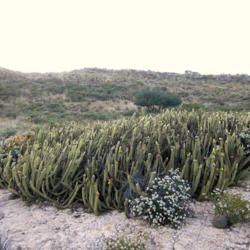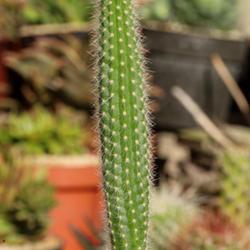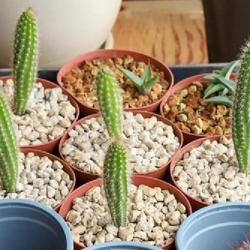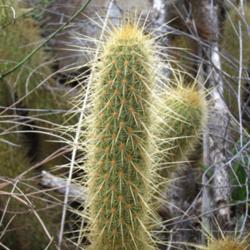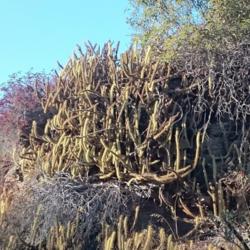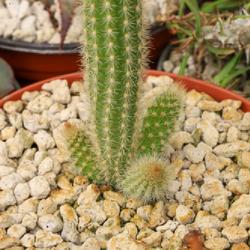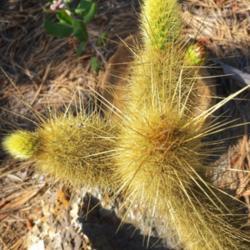Posted by
Baja_Costero (Baja California - Zone 11b) on Mar 30, 2018 11:26 PM concerning plant:
Yellow-spined, narrow-stemmed cactus from coastal southern California, some Channel Islands, and northwestern Baja California (south to near El Rosario). May form large clumps of mostly erect stems, branching at the base, to about 4-5 feet tall in habitat. These clumps provide shelter for birds and other small animals, and they act as nurse plants for Dudleyas, Ferocactus, and other succulents. Bergerocactus is found on open ground near the coast, but it may also occupy sheer rock faces and canyon walls, where it tends to have a more rambling and tangled habit.
20-25 inconspicuous ribs, 20-30 yellow spines (turning dark brown with age) often with one larger and turned backward down the stem. Flowers are yellow and diurnal. Fruit is fleshy and edible and very spiny. A color change to reddish indicates ripeness.
Incredibly drought tolerant and long-lived when established. Fast growing from seed (4"+ in a year). A wonderful subject for photography when backlit by the sun, especially in groups, since the spines catch the light and glow, looking almost furry and deceptively friendly.
This is the only species of Bergerocactus. It is one of the parents of the exotic natural hybrid xMyrtgerocactus lindsayi, along with the candelabra cactus Myrtillocactus cochal. It is also one of the parents of the rare natural hybrid xPacherocactus orcutti, along with the giant cardón, Pachycereus pringlei.


